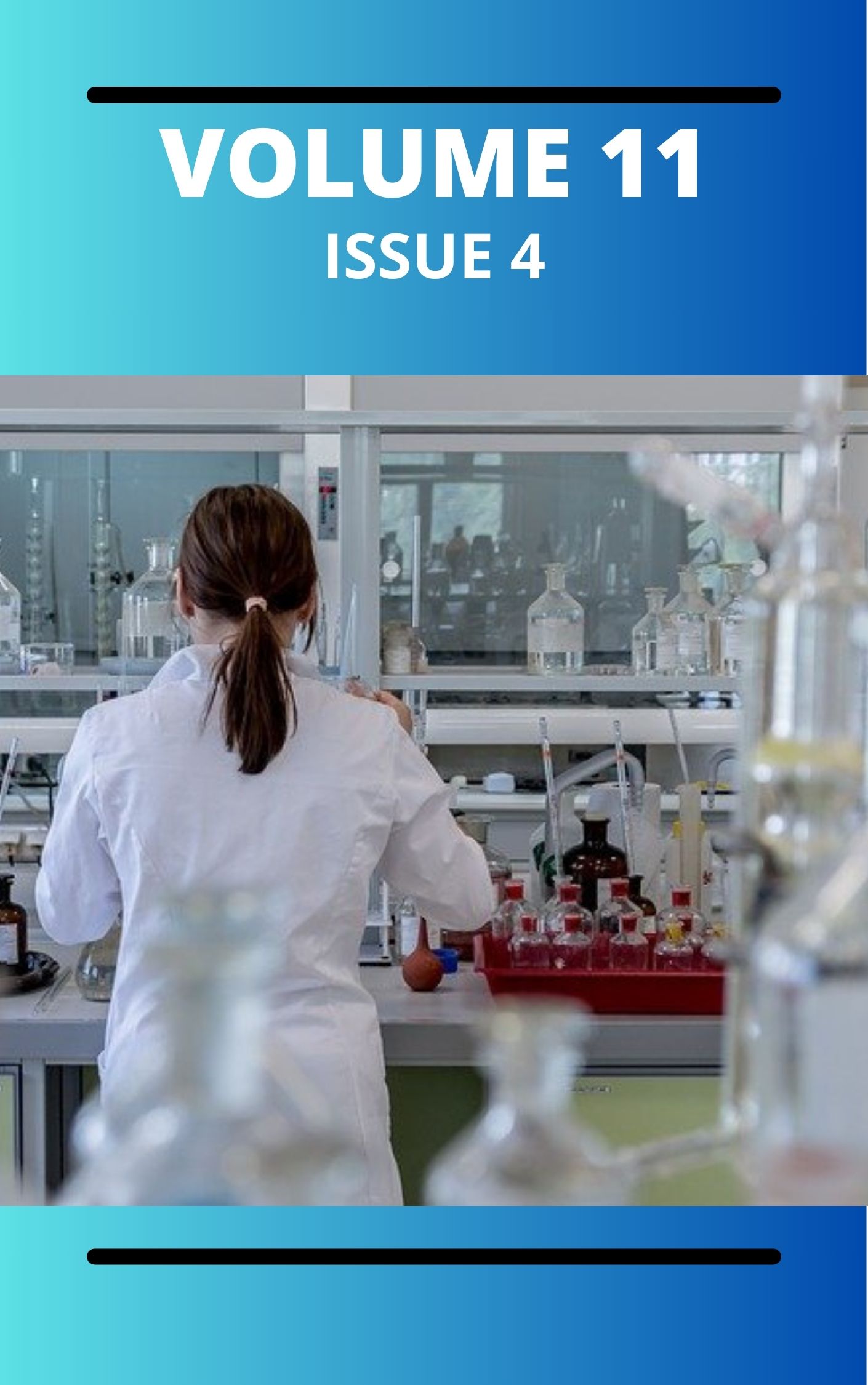Exploration of Vitreous Biochemical Markers for Postmortem Discrimination of Carbon Monoxide Toxicity: Insights from Animal Model
Keywords:
Autopsy, Disguise, Discriminate, Carbon monoxide toxicity,, CourtAbstract
This study investigates the potential of postmortem vitreous biochemical parameters as biomarkers for distinguishing between drowning and deaths disguised as drowning. The purpose of the study is to explore the discriminatory power of selected vitreous biochemical parameters in forensic autopsy to resolve disputed causes of death. The study aims to assess and compare the postmortem levels of sodium, potassium, chloride, calcium, total protein, albumin, globulin, glucose, cholesterol, triglycerides, urea, creatinine, uric acid, creatine kinase, and lactate dehydrogenase in rabbits that died from different causes. Using a completely randomized block design (CRBD), 96 male rabbits were divided into four groups: two treatment groups (one for drowning and one for strangulation followed by drowning) and two control groups. After a 24-hour postmortem interval, vitreous humor samples were analyzed using ion-selective electrode and standard biochemical methods.The results showed significant differences (P≤0.05) in the biochemical parameters between the drowning and strangulation groups. The postmortem levels of sodium in the drowning group were 145 ± 5 mmol/L, compared to 133 ± 4 mmol/L in the strangulation group. Potassium levels were 4.8 ± 0.5 mmol/L in the drowning group, significantly higher than 3.2 ± 0.4 mmol/L in the strangulation group. Chloride levels were 105 ± 7 mmol/L in the drowning group, while the strangulation group had 90 ± 6 mmol/L. Calcium levels were 2.5 ± 0.2 mmol/L in the drowning group, compared to 1.8 ± 0.3 mmol/L in the strangulation group. Total protein concentrations were 72 ± 3 g/L in the drowning group and 55 ± 4 g/L in the strangulation group. Creatinine levels were 72 ± 8 µmol/L in the drowning group, higher than 48 ± 7 µmol/L in the strangulation group. Creatine kinase and lactate dehydrogenase levels in the drowning group were 120 ± 10 U/L and 420 ± 30 U/L, respectively, whereas in the strangulation group, they were 85 ± 8 U/L and 300 ± 25 U/L.These biochemical markers were identified as potential biomarkers for distinguishing between deaths caused by actual drowning and those disguised as drowning. The study recommends the further development and validation of vitreous biochemical analysis as a reliable, non-invasive alternative to blood analysis for forensic investigations, particularly in cases of suspected drowning-related homicides. This approach holds promise for improving the accuracy of postmortem diagnostics and enhancing the justice system’s ability to resolve controversial death cases.
Most read articles by the same author(s)
- Ikimi, Charles German, Umeoguaju, Francis Uchenna, Ononamadu, Chimaobi James, Exploration of Vitreous Biochemical Markers for Postmortem Discrimination of Carbon Monoxide Toxicity: Insights from Animal Model , Communication In Physical Sciences: Vol. 11 No. 4 (2024): VOLUME 11 ISSUE 4
Similar Articles
- Uduak Bassey Essien, Magdalene E. Ikpi, Alexander I Ikeuba, Nsikak Bassey Essien, Experimental and Computational Chemistry Investigations of Tartaric acid as a Green Corrosion Inhibitor for API 5L X 52 Carbon Steel in 0.5 M HCl , Communication In Physical Sciences: Vol. 7 No. 4 (2021): VOLUME 7 ISSUE 4
- Vivian Ifeoma Okonkwo, Gloria Chika Udeokpote, Uduak Bassey Essien, Ethanol Extract of Curcuma longa as a green corrosion inhibitor for carbon steel in solution of HCl , Communication In Physical Sciences: Vol. 8 No. 4 (2022): VOLUME 8 ISSUE 4
- Dorathy Edet Etim, Nnamso Effiong Essien, Aniebiet Mmekuwem Essien, Impacts of Acute Toxicity of Heavy Metals (Hg And Pb) On Liver Enzymes of Normal Albino Wistar Rats , Communication In Physical Sciences: Vol. 11 No. 4 (2024): VOLUME 11 ISSUE 4
- Kabiru Usman, H. Abba, O. R. A. Iyun, Preparation and Characterization of African Star Apple Seed Shell (Chrysophyllum Africanum) For The Removal of Acid Red 9 , Communication In Physical Sciences: Vol. 8 No. 1 (2022): VOLUME 8 ISSUE 1
- Felix B. Fatoye, Yomi B. Gideon, Joseph I. Omada, Geochemical Characteristics of the Cretaceous Emewe–Efopa Coal in the Northern Anambra Basin of Nigeria , Communication In Physical Sciences: Vol. 7 No. 1 (2021): VOLUME 7 ISSUE 1
- Franklin Akwasi Adjei, Artificial Intelligence and Machine Learning in Environmental Health Science: A Review of Emerging Applications , Communication In Physical Sciences: Vol. 12 No. 5 (2025): Vol 12 Issue 5
- Simbiat Atinuke Lawal, Samuel Omefe, Adeseun Kafayat Balogun, Comfort Michael, Sakiru Folarin Bello, Itunu Taiwo Owen, Kevin Nnaemeka Ifiora, Circular Supply Chains in the Al Era with Renewable Energy Integration and Smart Transport Networks , Communication In Physical Sciences: Vol. 7 No. 4 (2021): VOLUME 7 ISSUE 4
- Attah Chuks Emmanuel, Gloria Chika Udeokpote, Ethanol Extract of Vernonia amygdalina Leaf as a Green Corrosion Inhibitor for Carbon Steel in Solution of HCl , Communication In Physical Sciences: Vol. 10 No. 3 (2023): VOLUME 10 ISSUE 3 (2023-2024)
- Mu’awiya Baba Aminu, Hareyani Zabidi, Juliet Ngozi Chijioke-Churuba, Saleh Mamman Abdullahi, Kolapo Fasina, Aliyu Abubakar, Muhammad Nurudeen Mashin, Abdulmalik Nana Fatima, Bertha Onyenachi Akagbue, Olusola Kolawole Ogunmilua, Environmental and Public Health Challenges of Phases Towards Cement Production, Remediation Monitoring and Evaluation Strategies , Communication In Physical Sciences: Vol. 12 No. 1 (2024): VOLUME 12 ISSUE 1
- Felix Bamidele Fatoye, Michael Adewale Ibitomi, Quality Evaluation of Udane–Biomi Coal in the Northern Anambra Basin of Nigeria , Communication In Physical Sciences: Vol. 7 No. 4 (2021): VOLUME 7 ISSUE 4
You may also start an advanced similarity search for this article.




